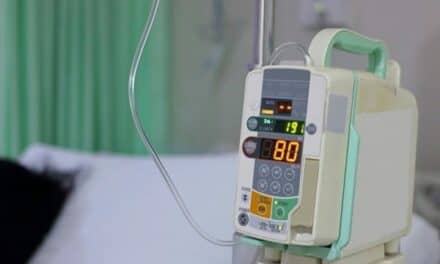By Jenny Dincher
Properly managing medical equipment alerts and recalls is a regulatory requirement, but for those of us in the healthcare technology management (HTM) field, we know the process of identifying, locating, and correcting the issue usually is much easier said than done. When the home health equipment owned by a hospital or health system is impacted by a safety alert or recall, the process to notify patients and correct the problem becomes even more complicated.
This issue has been exacerbated in recent years as healthcare moves into home settings. In its Top 10 Health Technology Hazards for 2023, ECRI listed “Gaps in Recalls for At-Home Medical Devices Cause Patient Confusion and Harm” as its top hazard. ECRI cites one major contributor to the problem being the lack of manufacturer visibility into who is using their home health equipment. This prevents patients from getting timely safety alerts and recalls.
The language used in the safety notifications is also blamed for creating confusion. “As HTM professionals, we see our share of medical equipment recalls and appreciate that recall and alert notifications are technical documents that can be difficult for the average person to understand,” says Barbara Maguire, VP of Healthcare Technology Management at ISS Solutions. “We can’t expect most patients to understand their risk of continuing to use the equipment without correcting the issue. Many don’t understand and don’t know what they should do if they hear about a safety concern.”
Not All Medical Equipment Recalls Are the Same
Most medical equipment recalls and alerts are initiated either by the U.S. FDA or voluntarily from the equipment manufacturer. There’s a common belief among the public that a recall means the device needs to be removed from use immediately, but that is not necessarily true. In some cases, removing the device—such as a ventilator—from a patient without an alternative replacement device creates an even bigger risk to the patient. There may not be an immediate fix for the issue, or it may not require any correction, but rather the alert contains information regarding the proper use of the equipment. There are also different priority levels of recalls. The FDA uses the following classifications and definitions:
- Class I recall: is the most serious and urgent and involves a situation in which there is a reasonable probability that the use of or exposure to a violative product will cause serious adverse health consequences or death.
- Class II recall: a situation in which use of or exposure to a violative product may cause temporary or medically reversible adverse health consequences or where the probability of serious adverse health consequences is remote.
- Class III recall: is a situation in which use of or exposure to a violative product is not likely to cause adverse health consequences.
- Market withdrawal: occurs when a product has a minor violation that would not be subject to FDA legal action. The firm removes the product from the market or corrects the violation. For example, a product removed from the market due to tampering, without evidence of manufacturing or distribution problems, would be a market withdrawal.
- Medical device safety alert: issued in situations where a medical device may present an unreasonable risk of substantial harm. In some cases, these situations also are considered recalls.
To add additional complexity, a device may be subject to multiple recalls over a period of time. Paul Monahan, director of quality at ISS Solutions, oversees the process of receiving medical equipment alert and recall notifications and ensuring ISS Solutions’ technicians supporting over 500,000 devices at over 300 sites nationwide respond appropriately to the notifications.
Further reading: FDA Class I Recalls Hit 15-Year High in 2022
“Over the last few years, there have been frequent recall and alert notifications involving ventilators, BiPAP, and CPAP machines,” Monahan says. “These devices are used both in hospital and in home settings, and the safety notifications were coming from multiple sources. This resulted in a lot of confusion about whether the notifications were for the same problem or multiple problems.”
Keys to Success: Standardization and Accurate Inventory
There are several steps which must be put into place well before you receive the safety alert, which will facilitate a quick response when it does happen. The most important is to have access to accurate, up-to-date information about the medical devices you manage, including model number, serial number, software version, and location. This includes hospital-owned equipment that may be in a home setting.
Once the safety alert or recall notification is received by the hospital, there often are several different paths (and detours) it can take before it reaches (hopefully) your HTM provider. Many hospitals pay for a service—such as ECRI or OneRecall—to identify alerts and recalls and forward them to the appropriate departments. However, it’s not uncommon for the notifications to find their way to HTM by first going to a manager, technician, owning department, supply chain, risk management, or other means, and then eventually forwarded to HTM. The problem with this round-about distribution method is it relies on many people to know what to do with the notification when they first get it, who to send it to from there, and to understand it’s not just the few devices in their department that may be impacted.
An important (but often missed) step is to identify all the devices impacted by the recall within the hospital and health system—including home care, ambulatory care, medical offices, etc.—and create work orders for each one requiring corrective action.
“Creating one umbrella work order to cover all impacted devices needing corrective action is not a good practice, because it does not enable HTM to track which devices were corrected and safe for patient use and which ones still need to be touched,” Monahan says. “In addition, hospitals need to show documentation on the status of each device when the FDA or other agency walks in to see if you responded appropriately to the alert/recall.”
Another benefit to tracking the cost of parts and labor to respond to the alert is, in some cases, hospitals have been able to get reimbursed from the manufacturer for those costs or have been able to negotiate better terms for future purchases.
Streamlining the Alert/Recall Process Through Centralization
An effective equipment alert/recall program relies on healthcare providers, service providers, manufacturers, and government agencies to all work in tandem to alert patients who are using the equipment of potential safety hazards and ensure the hazard is corrected.
Maguire admits it has been her experience that this does not always happen, so ISS Solutions developed a robust Medical Equipment Alert and Recall program to ensure that urgent alerts and recalls get to HTM, and all impacted equipment requiring intervention from an ISS Solutions’ technician—including managed home care equipment—are identified and a work order created for each device.
“We centralized the process and have all alerts and recall notifications sent to an email dedicated to that process,” says Maguire. “So, whether the notification originally comes through our recall service or is sent to a technician or a department head, it is all funneled to one place within ISS Solutions. That email is reviewed to identify the urgency of the recall or alert, what needs to be done—if anything—to correct it, and what devices we manage are affected. For those devices requiring corrective action, work orders are assigned to the technician who will document the issue was corrected on every impacted device.”
And just to make sure an alert or recall doesn’t get missed, ISS Solutions reviews the U.S. FDA medical device recalls on their website weekly.
Monahan says that an effective home health equipment alert/recall program relies heavily on both HTM and the home healthcare providers.
“Our technicians do not travel to people’s homes, so when there is an alert or recall that involves equipment, we manage that may be in peoples’ homes, we first communicate with the home care leaders to discuss the recall, its urgency, and the corrective action needed,” he says. “We also discuss what communication needs to go to patients. If the device needs corrective action, we coordinate with home care to pick up the device and get it to us. We will then fix it ourselves or coordinate the repair with the manufacturer, and then get it back to home care.”
Often there is not an immediate resolution, and so temporary measures are recommended by the manufacturer. This requires HTM professionals to consult with clinicians to assess the risk of continuing to use the device while a permanent corrective action is developed and approved by the FDA.
In some cases, the healthcare organization may determine to remove the device from service if they have the luxury to replace it. Others will incorporate the temporary measures and continue to use the device. It is important that the risks involved with continuing to use a device be re-evaluated periodically as new information becomes available.
Jenny Dincher is director of business development for ISS Solutions, which provides healthcare technology management services. Questions and comments can be directed to 24×7 Magazine chief editor Keri Forsythe-Stephens at [email protected].
References:
- U.S. FDA’s Center for Devices and Radiological health 2022 Annual Report.
- ECRI Top 10 Health Technology Hazards for 2023
- U.S. FDA 2023 Medical Device Recalls





